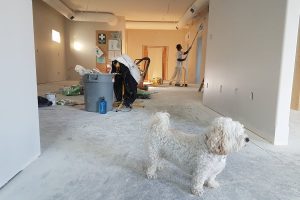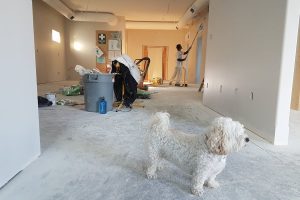Planning Home Improvements – Face the Challenge Right!

We make home renovations to sell a house, to make our apartment livable, to get rid of our children’s wall scribbles or pet damages… Regardless of the reason, the renovation usually is to some extent stressful and chaotic event.
To make the home improvement time as efficient as possible, we should always start with an exact plan and huge reserves of energy and motivation. How to survive home renovation, make it beneficial in the long run the house itself and from a real estate market point of view?
We’ll try to figure this out following the Sea Pines market report (to see what aspects of a property decide about its price on the real estate market) and our very own experiences!
Don’t Start without a Plan!
Without a plan, you and your constructor will be running around nervous and frustrated. It can be especially difficult if you have the very first home renovation in your life ahead of you. However, even though it takes lots of time and your increased focus, making such plans is actually a really exciting experience! What to pay attention to? And who consult the plan with?
Step 1: The Level of the Renovation
To what extent does your home require a renovation and what can you afford?
- Cosmetic
Cosmetic improvements include painting (both inside and outside), furnishing and carpentry work, flooring, basic plumbing… Cosmetic repairs might not even require hiring a constructor if you’re skilled enough. However, we always advise consulting one before rolling up your sleeves to avoid potential accidents or later failures during use.
- Medium
Informing your contractor that you need to make medium home renovation means advanced plumbing, remodelling kitchen or bathroom, building a garage next to your house, etc. Medium changes take more time and work than cosmetic renovations but aren’t as intrusive as overhauls.
- Major
Major home improvements (also called overhaul) mean structural changes in your residence such as building an additional floor, foundation repair, extending the house, building an outdoor or indoor sauna, etc. Major home renovation can even take more than one year, depending on the exact kind of needed repairs and improvements. This kind of home renovation requires certified and specialized constructors.
Step 2: The Exact Changes You Want to Make
After deciding on the scale of the renovation you want to make and can afford, you’re ready to get into details — the distribution of furniture and equipment, indicative dimensions of the equipment or additional rooms, the design… It’s about how you see the changes and present them to your constructor so they can understand each other clearly when it comes to your expectations and the actual renovation possibilities.
If you can feel you’re out of ideas or you’re not sure if your current ones will work, consult an interior designer! It probably won’t be necessary if the improvements are going to be cosmetic but with medium renovations, you might want to use some help.
Keep in mind that overhauls need particular attention. If the overhaul includes structural repairs, it would be reasonable to consult an architect, as well.
Step 3: Set the Renovation Budget
The initial attempt to calculate the budget is just to have an indicative amount of money as a starting point on the first meeting with a constructor. However, do thorough research and try to count in all the tiniest details. Divide the budget into three possible parts — the labour of the constructor and their crew, building materials, and the necessary equipment.
Setting the budget will also make you analyse the renovation plan once again and rethink your ideas!
Step 4: Schedule a Home Inspection
Again — the need for a home inspection depends on the renovation scale you’re planning. If your plan includes interference in your house’s foundations, plumbing, electric circuit, etc., such an inspection is necessary! Especially in the case of old buildings in which there might be needed, i.a., a full exchange old tubes and pipes.
The inspection itself can even take a whole day or more if there will be needed further consultation with a different certified constructor. They also are going to need another few days to make the valuation of the whole project.
Step 5: Adjust the Budget
After consultations with designers, architects, constructors, and other needed professionalists, time to prepare the exact budget! Add 15-25% to the final amount to make sure you won’t get surprised at the end of the renovation adventure. One of the most common mistakes is underestimating the duration and costs of the repairs!
As we’ve mentioned earlier, there is a great challenge in front of you but also an amazing investment into yours and your family’s future. Renovating the house you live in gives it a more personal touch and makes it yours even more.
It’s a place where you’re probably going to spend a significant part of your life, where your children are going to grow, make their first steps and take care of their first pets. Your house is your family’s shelter — it’s worth all the effort of careful planning!






